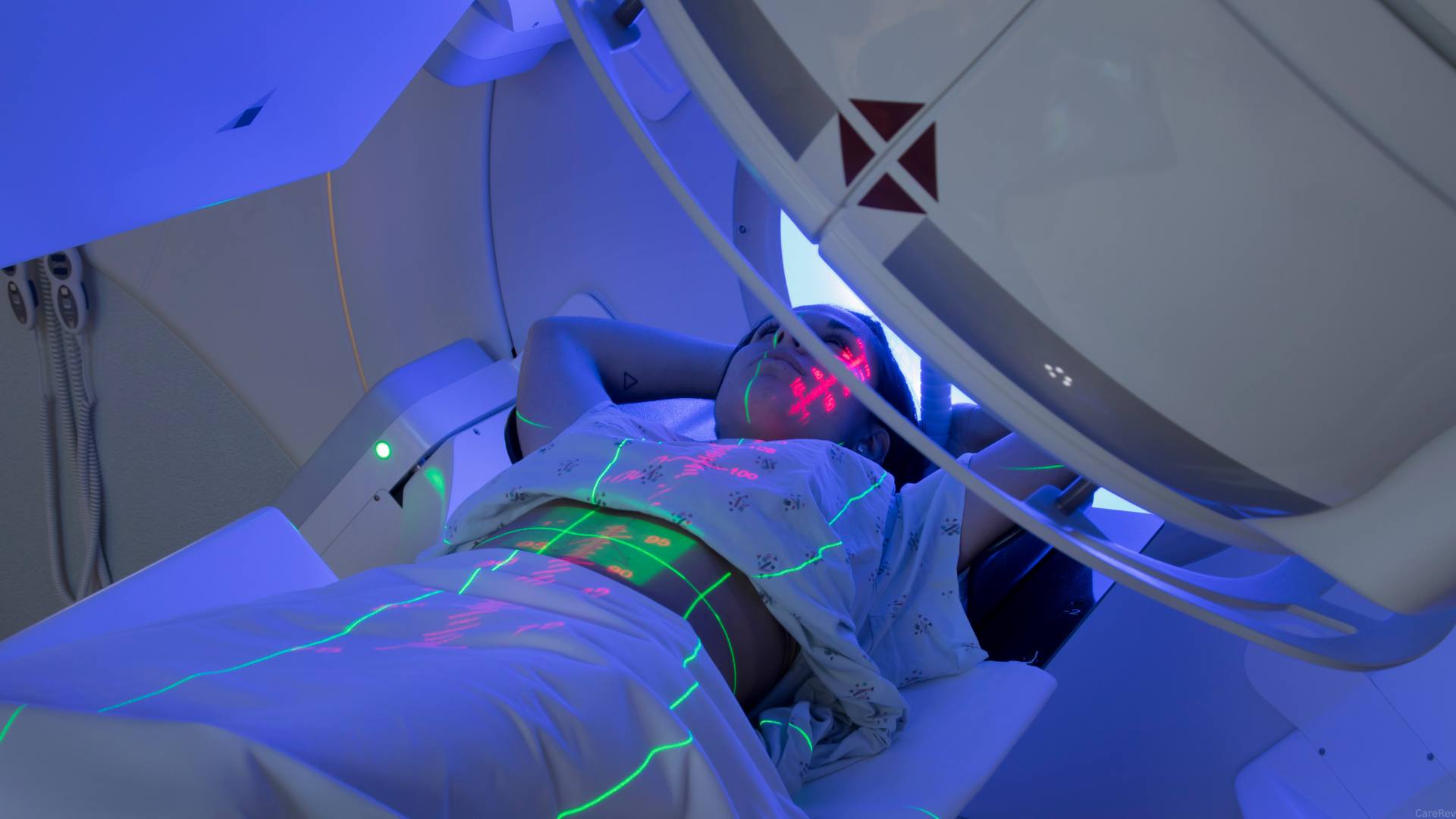
When you hear the term radiation tech, you might think of someone operating X-ray machines in a hospital or performing CT scans in an emergency room. While that’s true, the role of a radiation tech (short for radiologic technologist) goes much deeper than pressing buttons or taking images. Radiation techs are essential members of the healthcare team who combine advanced imaging technology with patient care to help diagnose and treat disease.
If you’re interested in healthcare, technology, and making a direct impact on patient outcomes, a career as a radiation tech may be the perfect fit. This guide will walk you through what radiation techs do, how to become one, what to expect on the job, and where this career can take you.
What is a radiation tech?
A radiation tech, also called a radiologic technologist or radiographer, is a healthcare professional trained to perform diagnostic imaging examinations using technologies such as:
- X-rays
- Computed tomography (CT) scans
- Magnetic resonance imaging (MRI)
- Mammography
- Fluoroscopy
These medical images allow physicians to diagnose conditions like broken bones, internal bleeding, infections, or even cancers. Some radiation techs also work alongside radiation oncologists to deliver targeted radiation treatments to patients with cancer.
In short, radiation techs bridge the gap between cutting-edge medical technology and compassionate patient care.
What does a radiation tech do?
The daily duties of a radiation tech depend on their work setting and area of specialization, but most share a core set of responsibilities:
1. Preparing patients for imaging procedures
Radiation techs greet patients, explain what will happen during their imaging exam, and answer any questions. Many patients are nervous or in pain, so techs play a key role in making them feel safe and comfortable.
2. Operating imaging equipment
Whether it’s an X-ray machine or a CT scanner, radiation techs are responsible for positioning both the patient and the equipment correctly. Proper technique ensures that the resulting images are clear, accurate, and diagnostic-quality.
3. Protecting patients and themselves from radiation exposure
Radiation techs are highly trained in radiation safety. They use lead aprons, shields, and precise exposure settings to minimize unnecessary radiation exposure to patients and healthcare staff.
4. Working with physicians
After capturing images, techs often work closely with radiologists (physicians who interpret medical images) to ensure the scans meet diagnostic needs.
5. Maintaining and troubleshooting equipment
Techs also monitor imaging equipment for performance and safety, reporting any malfunctions and maintaining accurate patient records.
Where do radiation techs work?
Radiation techs work in a variety of healthcare settings, including:
- Hospitals: The largest employer of radiation techs, where they assist with emergency, inpatient, and surgical imaging.
- Outpatient diagnostic centers: Offering X-rays, CTs, MRIs, and mammograms on an appointment basis.
- Physician offices: Especially orthopedic and urgent care clinics.
- Cancer treatment centers: Radiation therapy techs help administer radiation treatments under medical supervision.
- Mobile imaging units: Traveling to patients in rural or underserved areas.
Many techs also specialize in one imaging modality, such as CT, MRI, or mammography, depending on their interests and certifications.
Skills every radiation tech needs
Being a radiation tech requires a combination of technical expertise and people skills. The best techs excel at:
- Attention to detail: Precise imaging depends on correct positioning, calibration, and radiation settings.
- Interpersonal communication: Explaining procedures and comforting anxious patients.
- Critical thinking: Adjusting techniques based on patient anatomy or limitations.
- Technical proficiency: Understanding complex imaging systems and software.
- Teamwork: Collaborating with doctors, nurses, and other healthcare staff.
If you enjoy a mix of hands-on work, problem-solving, and direct patient care, the field offers daily variety and meaningful impact.
How to become a radiation tech
Becoming a radiation tech involves a mix of formal education, clinical training, and professional certification. Here’s a step-by-step overview:
Step 1: Earn a high school diploma or GED
Strong backgrounds in math, biology, and physics are helpful since imaging relies heavily on anatomy and science.
Step 2: Complete an accredited radiologic technology program
Most aspiring radiation techs earn either:
- An associate degree in radiologic technology (most common), or
- A bachelor’s degree in radiologic sciences for advanced roles or management paths.
Programs typically take 2–4 years and include both classroom instruction and hands-on clinical experience.
Key subjects include:
- Anatomy and physiology
- Radiation physics
- Patient care and positioning
- Image evaluation
- Radiation safety and protection
Look for programs accredited by the Joint Review Committee on Education in Radiologic Technology (JRCERT) to ensure eligibility for certification.
Step 3: Get certified and licensed
After graduation, you’ll need to become certified through the American Registry of Radiologic Technologists (ARRT). To earn the ARRT credential, you must:
- Graduate from an accredited program
- Pass the ARRT certification exam
- Meet continuing education requirements every two years
Many states also require state licensure in addition to ARRT certification. Always check your specific state’s regulations.
Step 4: Choose a specialty (optional)
Once you gain experience, you can specialize in areas such as:
- Computed Tomography (CT) - Learn more about becoming a CT Tech
- Magnetic Resonance Imaging (MRI)
- Mammography
- Radiation Therapy
- Interventional Radiography
Each specialty may require additional certification through ARRT or other professional bodies.
How long does it take to become a radiation tech?
In most cases, you can become a radiation tech in about two years with an associate degree program. Those pursuing bachelor’s degrees or multiple certifications may take up to four years before entering the field.
Radiation tech salary and job outlook
According to the U.S. Bureau of Labor Statistics (BLS), as of 2024:
- Median annual salary: Around $78,980
- Top 10%: Earn more than $100,000
- Job growth: Projected at 5% from 2024 to 2034—faster than the national average for all occupations.
Demand for diagnostic imaging continues to rise due to an aging population and increasing use of imaging for preventive care and disease management. This makes radiation tech one of the most stable and rewarding careers in healthcare.
Radiation tech vs. radiation therapist: What’s the difference?
Although the names sound similar, these are two distinct roles:
Both roles require knowledge of radiation safety and anatomy, but radiation therapists work primarily in oncology, while radiation techs focus on diagnostic imaging.
Pros and cons of being a radiation tech
Pros
- High job demand across hospitals and outpatient centers
- Competitive salary and benefits
- Fast entry into the field (2-year degree)
- Opportunities to specialize in advanced imaging areas
- Meaningful patient interaction
Cons
- Physically demanding (standing, lifting, positioning patients)
- Shift work may include nights or weekends
- Potential exposure to radiation (with proper safety measures)
- Emotional challenges when caring for sick or injured patients
Despite the challenges, many radiation techs find the work deeply fulfilling, knowing their skills help physicians diagnose and treat patients more effectively.
Career advancement opportunities
Once you’ve established yourself as a radiation tech, there are multiple paths for career growth:
- Advanced modalities: MRI, CT, or mammography certification
- Supervisory roles: Imaging supervisor or department manager
- Education: Teaching in radiologic technology programs
- Sales and applications: Working for imaging equipment manufacturers
- Specialty roles: Radiation therapy or interventional radiography
Continuing education and professional networking through organizations like the American Society of Radiologic Technologists (ASRT) can open new doors for advancement.
Tips for success as a radiation tech
- Prioritize patient care. Empathy and communication go a long way toward creating positive experiences.
- Stay current. Imaging technology evolves rapidly—commit to lifelong learning.
- Focus on precision. Small positioning errors can mean missed diagnoses or repeat scans.
- Build teamwork. Collaboration with radiologists and nurses ensures quality outcomes.
- Protect yourself and others. Follow all radiation safety protocols without exception.
Is being a radiation tech right for you?
If you’re fascinated by medical technology, enjoy problem-solving, and want to play a vital role in diagnosing and treating patients, then becoming a radiation tech may be the right path. It offers a strong job market, good pay, and daily opportunities to make a difference in people’s lives.
Whether you’re just exploring healthcare careers or ready to enroll in a program, this is an exciting time to enter the field. As imaging technology advances, so too will the opportunities for skilled radiation techs across the country.





